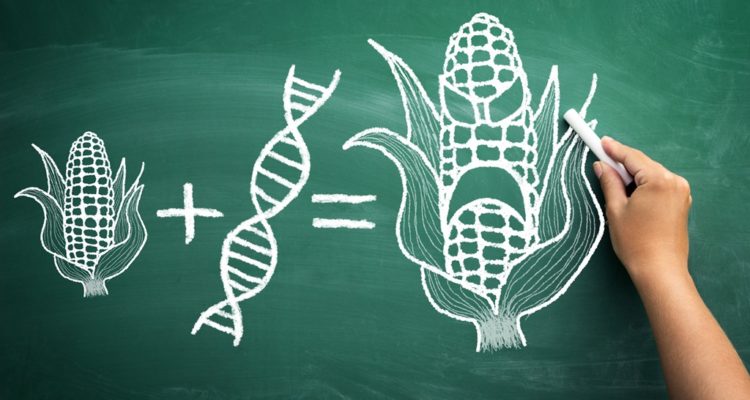WHAT YOU’LL BE EATING IF GMO MUSTARD IS APPROVED BY SUPREME COURT
By Kavitha Kuruganti
The public debate over Genetically Modified Organisms (GMOs)—whether they are needed and are safe, how to assess the claimed benefits and potential risks, how decision making should proceed in a country like India, etc—is back in the limelight because the Government of India is on the verge of potentially approving a GM food crop (a herbicide tolerant mustard crop) for cultivation.
GMOs are living organisms whose genetic makeup has been tweaked unnaturally, most often through random insertion of alien genes, which are believed to carry desirable new characteristics. Such GMOs include seeds, which have an ability to further propagate themselves when they germinate and grow. While proponents make it appear that it is a precise and advanced breeding technology, the reality is that not only is this science unnatural, but imprecise, unpredictable, irreversible and uncontrollable (given that it is a self propagating living technology once released into the environment).
Genetically modified crops can withstand greater applications of toxic herbicides (like glyphosate, which has been recently classified as a probable human carcinogen by the World Health Organisation). Such crops mean greater use of chemicals, with health and environmental impacts such as creation of super weeds and unintended negative consequences on beneficial organisms like bees and butterflies. For consumers, this means higher levels of chemical residue in their foods.
The other trait in GM crops is the production of a pesticide inside the plant itself by introduction of bt (from a bacterium called bacillus thuringiensis) genes, apparently (it is claimed) to help reduce usage of external pesticides on crops
An overwhelming majority of countries around the world, taking a precautionary approach, have abstained from using this controversial technology, while others have banned the same. More than 95 percent of GM crop in the world is grown in just six countries, including India and China, which cultivate Bt cotton, a non food crop. The largest area devoted to such crops (around 81%) is planted with GMOs that have been modified to withstand greater applications of toxic herbicides (like glyphosate, which has been recently classified as a Probable Human Carcinogen by the World Health Organisation). Such crops have meant greater use of chemicals, with consequent health and environmental impacts such as the creation of ‘super weeds’ and unintended negative consequences on beneficial organisms like bees and butterflies. For consumers, this means higher levels of chemical residue in their foods. The other common trait seen in commercialised GM crops is the production of a pesticide within the plant by introduction of Bt (from a bacterium called Bacillus thuringiensis) genes, claiming that this would reduce the need for external pesticide sprays on the crop.
It is mainly these two traits of genetic modification, despite the great hype surrounding this technology, that have to temper our analysis of GMOs and their applicability and safety. While herbicide tolerance might be convenient in countries where less than 1 percent of the population is engaged in farming, in a country like India, where a majority of poor rural women find employment in manual deweeding, this might have huge socio-economic ramifications. It, therefore, becomes important to apply policy directives on the question of GMO deployment in our food, farming and environment. In the name of encouraging scientific research, can the government allow any organism to be genetically modified for any trait? An independent Supreme Court expert committee has recommended that we should disallow genetically modified versions of Bt food crops, herbicide tolerant crops and for any crops that we are the Centre of Origin/Diversity. It also becomes important to ask if transgenic technology is needed in the first instance, before any further regulatory processes are run on each application received by Government of India. This means that needs and alternatives assessment should be built into the regulatory regime.
GMO MUSTARD: CURRENT STATUS
The case against commercial release of GM Mustard has now reached the Supreme Court and we will have to wait until the next hearing to learn of Mustard’s fate. Join Pure & Eco India in following issues to discover the latest developments on this front.
In the policy realm, Agriculture is a state subject as per the Constitution of India. While the Centre processes applications for GMOs through the Genetic Engineering Appraisal Committee (GEAC) and gives clearances, the consequences of various decisions pertaining to agriculture have to be borne directly by state governments and not the Centre. It then becomes imperative that the central government does not infringe upon the state government’s policies on this matter.
As far as organic farming is concerned, regulation prohibits the use of GM seeds or any other bio-inputs made out of GMOs and products thereof. In fact, ensuring that their crops are not contaminated by neighbouring GM crops has also been unfortunately foisted on organic farmers, since they are the parties seeking certification of their produce, and not conventional or GM farmers. For many organic farmers in the country, even without such regulation, GMOs are antithetical to their understanding of agro-ecology at work. It is apparent that GMOs and organic cannot co-exist. For consumers, shifting to organic produce is a guarantee that they are not consuming GM foods. However, if GMOs are approved by the government, both for farmers (including organic farmers) and consumers, choices become limited. Also, there are currently no liability laws for when risks pertaining to GMOs get actualised in reality and in the absence of such a regime, the government should not be proceeding forward with GMOs.
It is apparent that GM crops and foods pose a variety of risks, as proven by exhaustive scientific evidence. It is not without several good reasons that most countries do not want to opt for this technology. When all the risks involved are understood in a holistic framework, it becomes clear why GMOs are not an option at all, especially in the face of many agro-ecological options that are successfully being scaled up, and why many civil society formations have been asking for a ban on GMOs in our food, farming and environment.

The author is with the Coalition for a GM-Free India and with Alliance for Sustainable & Holistic Agriculture (ASHA)



Leave a Reply